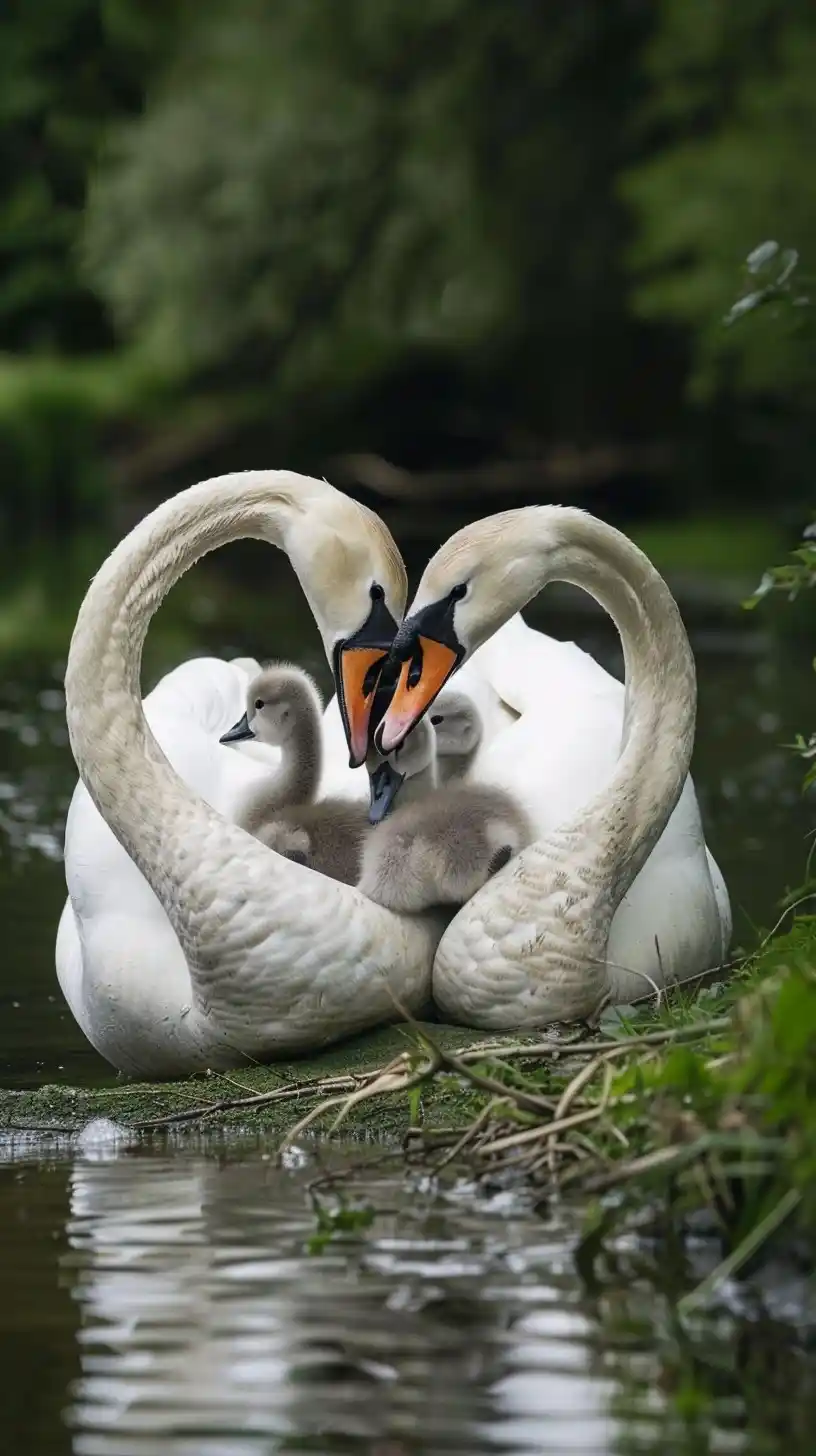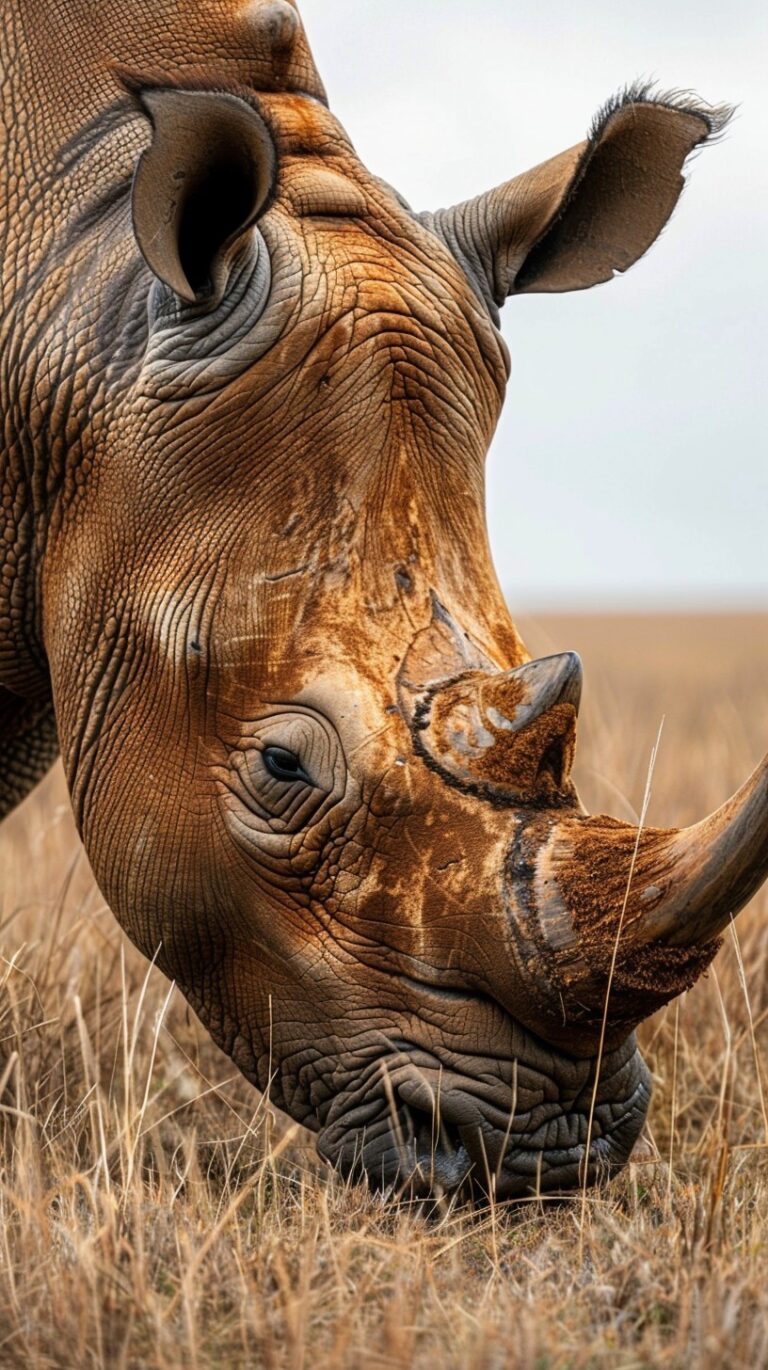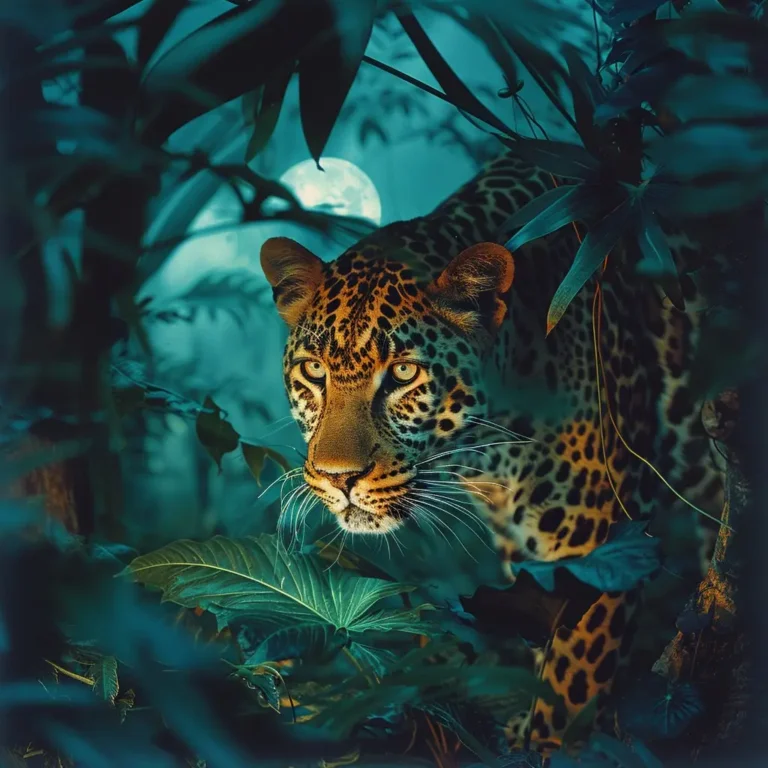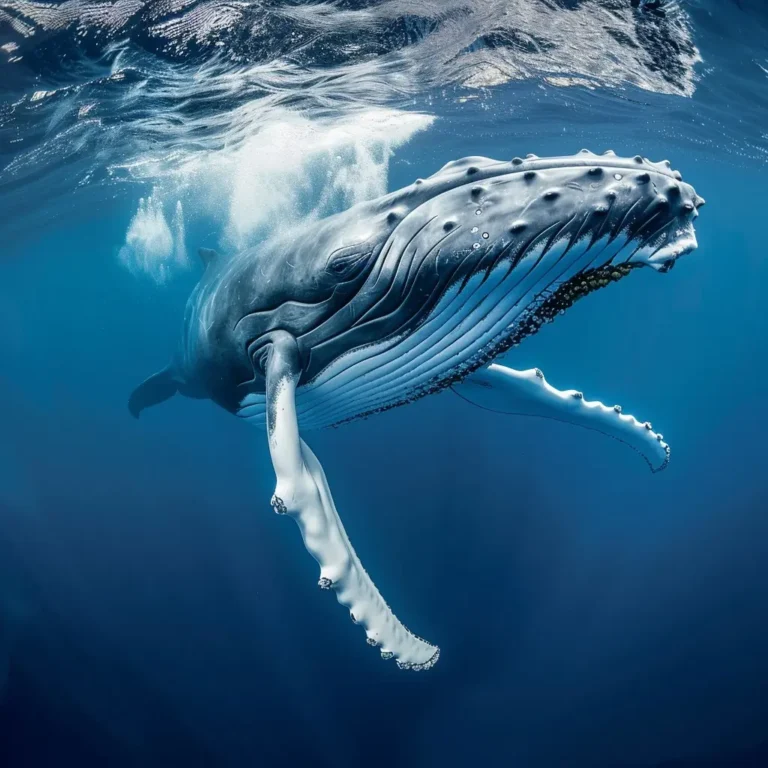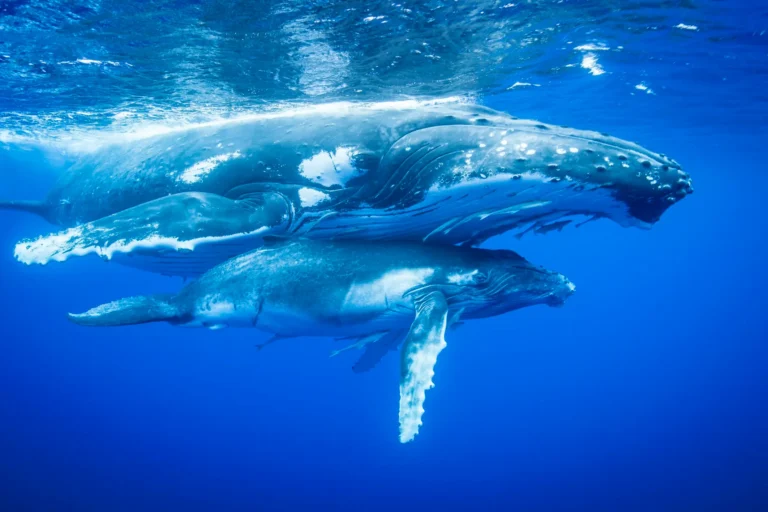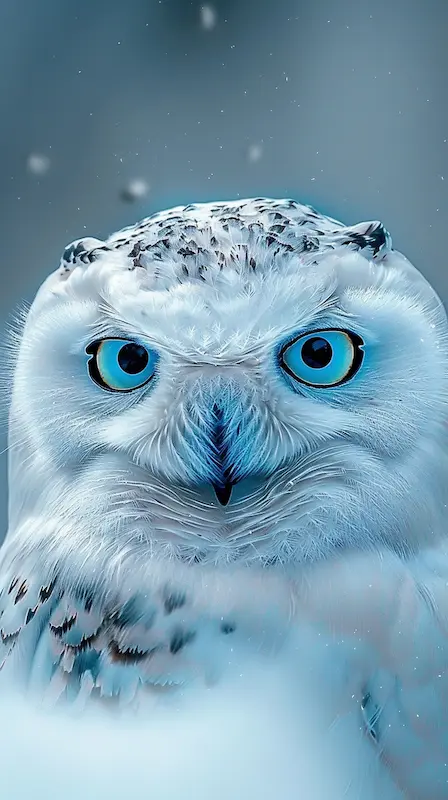Fun facts about swans that will leave you highly informed about his wonderful creatures. Swans have long captivated human imagination with their ethereal beauty and graceful movements.
From their enchanting glides across serene lakes to their majestic courtship displays, these magnificent birds are more than just a symbol of elegance—they are creatures of remarkable complexity and intriguing behaviors.
Dive into these 100 fun facts about swans and discover the secrets behind their captivating allure and unique traits that make them stand out in the avian world!
Stay sharp with our Trivia game generator or Fun Facts game for you mental exercises and mental sharpness!
100 Fun Facts About Swans
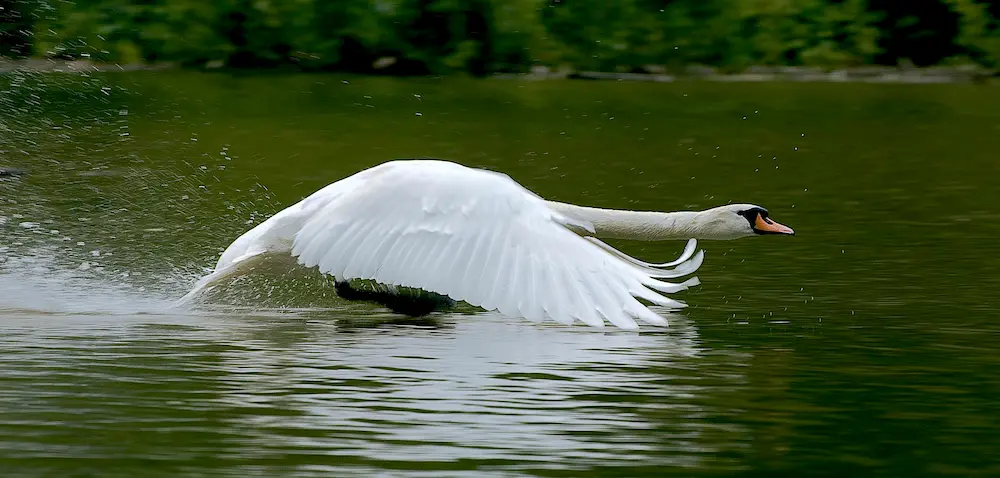
1. Swans are known for their grace and beauty, often depicted in art and folklore.
- Details: Swans have long, elegant necks and pristine white feathers, which have inspired countless artistic representations and myths across various cultures.
2. There are about six species of swans found around the world.
- Details: The primary species include the Mute Swan, Trumpeter Swan, Whooper Swan, Bewick’s Swan, Black Swan, and the Coscoroba Swan. Each species has distinct characteristics and habitats.
3. Swans can live up to 20-30 years in the wild.
- Details: The lifespan of swans can vary based on their species and environmental conditions. Swans in captivity often live longer due to fewer predators and regular care.
4. Swans are known for their monogamous relationships, often staying with one partner for life.
- Details: Swans form long-term bonds with their mates, engaging in elaborate courtship rituals. Their strong pair bonds help in raising their young.
5. Swans are omnivores, eating a variety of plant and animal matter.
- Details: Their diet includes aquatic plants, small fish, insects, and algae. Their feeding habits vary depending on their habitat and the availability of food.
6. The Black Swan, native to Australia, is one of the few species with entirely black feathers.
- Details: Unlike other swan species, the Black Swan has striking black plumage with a contrasting white bill and legs. It is well-adapted to the Australian environment.
7. Swans use their long necks to forage for food in shallow water.
- Details: Their elongated necks allow them to reach underwater vegetation and insects without fully submerging their bodies.
8. Swans can reach a wingspan of up to 10 feet, making them one of the largest flying birds.
- Details: The impressive wingspan helps them migrate long distances and perform majestic flight displays.
9. Swans are known to be highly territorial, especially during breeding season.
- Details: They often establish and defend territories on lakes and rivers, using aggressive displays and vocalizations to ward off intruders.
10. The mute swan is named for its relatively silent behavior compared to other swan species.
- Details: Although they are not completely silent, Mute Swans are less vocal than species like the Whooper Swan, which is known for its loud calls.
11. Swans are capable of producing a wide range of vocalizations, including trumpeting calls and hissing sounds.
- Details: Their vocalizations are used for communication between mates and to establish territory. The calls vary by species and can be quite loud and distinctive.
12. Swans have been featured in numerous myths and legends throughout history.
- Details: In Greek mythology, Zeus transformed into a swan, and in various cultures, swans symbolize purity, love, and transformation.
13. The cygnets are the young swans, and they are covered in fluffy gray down when they hatch.
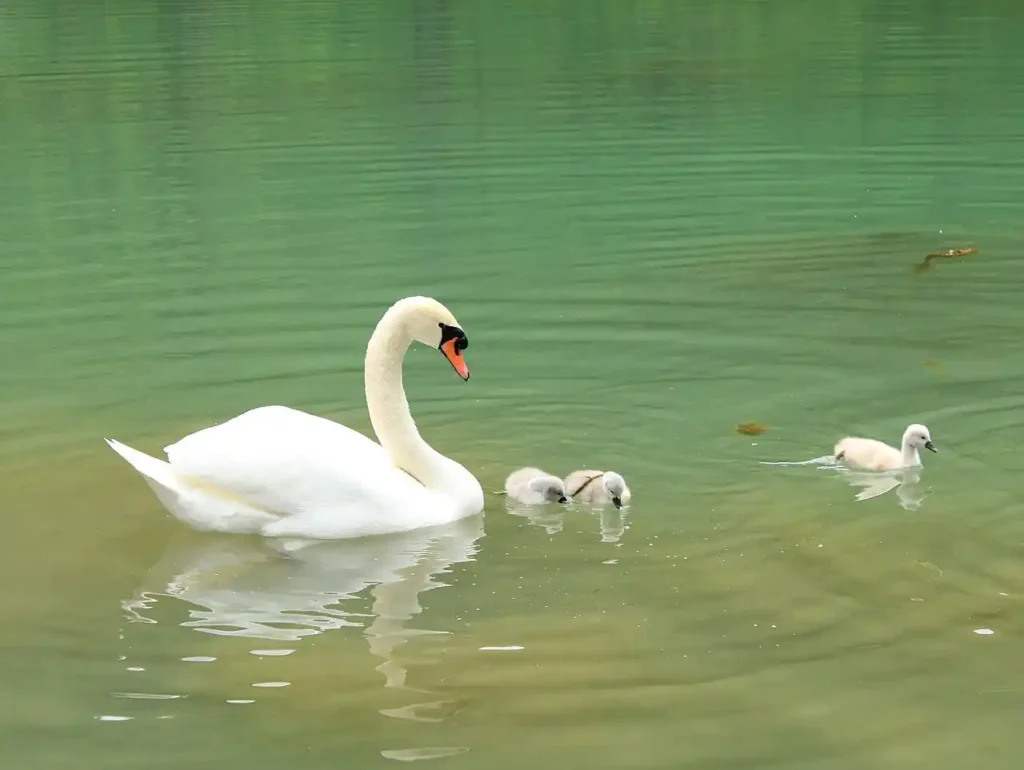
- Details: Newly hatched cygnets are initially covered in soft, gray feathers, which gradually change to white as they mature, depending on the species.
14. Swans build large nests near the water’s edge, often using reeds and other plant materials.
- Details: Their nests are constructed with care and can be quite large, providing a safe and comfortable environment for the eggs and cygnets.
15. Swans have a unique way of sleeping called “tucking,” where they rest their heads under their wings.
- Details: This behavior helps them conserve body heat and keep their feathers clean and dry while resting.
16. The Whooper Swan is known for its distinctive, whooping call, which can be heard from a distance.
- Details: This species is named for its loud and resonant call, which is used for communication during migration and in their breeding territories.
17. Swans are capable of impressive displays during courtship, including synchronized swimming and head bobbing.
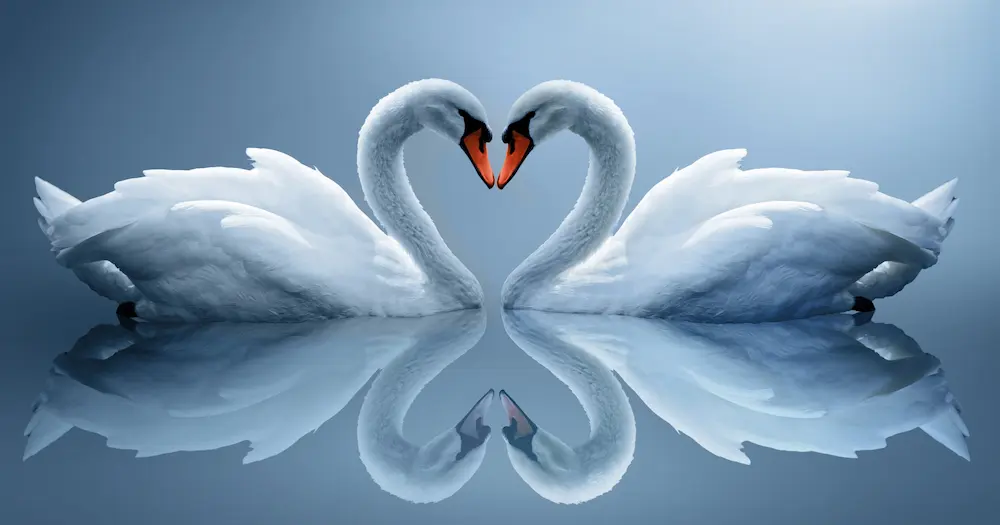
- Details: These displays help strengthen pair bonds and attract potential mates. The synchronized movements and mutual grooming are key elements of their courtship rituals.
18. Swans have webbed feet that make them excellent swimmers.
- Details: Their webbed feet allow them to glide smoothly through water and maneuver effectively while foraging and escaping from predators.
19. Swans can be found on every continent except Antarctica.
- Details: They inhabit a variety of freshwater environments, including lakes, rivers, and marshes, in regions ranging from Europe and Asia to North America and Australia.
20. Swans can fly at speeds of up to 30 miles per hour.
- Details: Their powerful wings and aerodynamic bodies enable them to travel at high speeds, which is especially useful during migration.
21. Swans are known for their elaborate mating dances and displays.
- Details: Courtship displays include synchronized movements, such as head bobbing and neck arching, which help establish pair bonds and attract mates.
22. The Coscoroba Swan is the smallest of all swan species.
- Details: Native to South America, the Coscoroba Swan is smaller in size compared to other swans, with a more compact body and shorter neck.
23. Swans are highly social birds and often form large flocks during migration.
- Details: While they can be territorial during the breeding season, swans come together in large groups when migrating or during winter to find food and rest.
24. The Trumpeter Swan is the largest native North American swan.
- Details: This species is known for its large size and distinctive trumpeting call. It is found in various freshwater habitats across North America.
25. Swans have a specialized diet that includes aquatic plants, which they filter using their beaks.
- Details: They use their beaks to sift through water and mud, picking out plant material and small organisms while feeding.
26. Swans are capable of diving underwater to reach food.
- Details: While they primarily feed on the surface, some swans can dive to a depth of several feet to access submerged vegetation.
27. Swans have excellent vision, which helps them spot predators and find food.
- Details: Their keen eyesight is crucial for detecting danger and locating food sources, especially in their often murky aquatic environments.
28. The Bewick’s Swan is named after the English naturalist Thomas Bewick.
- Details: This small swan species, found in Europe and Asia, was named in honor of Thomas Bewick, who made significant contributions to bird illustrations and ornithology.
29. Swans are often seen in pairs or family groups, especially during the breeding season.
- Details: Swans maintain close family bonds, with both parents involved in caring for their cygnets and defending their territory.
30. Swans have a unique method of grooming, which involves using their beaks to clean their feathers.
- Details: Grooming is essential for maintaining the health and waterproofing of their feathers. Swans use their beaks to preen and distribute oils from their preen gland.
31. The Black Swan is known for its distinctive red bill and legs.
- Details: In addition to its black plumage, the Black Swan has a bright red bill and legs, which contrast strikingly with its dark feathers.
32. Swans are often featured in classical music and ballet, such as Tchaikovsky’s “Swan Lake.”
- Details: Swans have inspired many works of art and music. “Swan Lake” is one of the most famous ballet compositions, depicting the mythical and graceful nature of swans.
33. The Trumpeter Swan was once on the endangered species list but has made a recovery due to conservation efforts.
- Details: Conservation programs and habitat protection have helped increase the population of Trumpeter Swans, leading to their improved status.
34. Swans are known for their distinctive, graceful swimming style, often seen with their necks curved in a characteristic “S” shape.
- Details: Their swimming posture is not only aesthetically pleasing but also helps them maintain balance and streamline their movement in the water.
35. Swans are able to sleep with one eye open, a behavior known as unihemispheric slow-wave sleep.
- Details: This adaptation allows them to stay alert for predators while resting. One half of their brain remains active while the other half is in a sleep state.
36. Swans have been domesticated and bred for various purposes, including ornamental ponds and wildlife conservation.
- Details: Domesticated swans are often kept in controlled environments for aesthetic purposes or to help manage wildlife populations in certain areas.
37. The Mute Swan is known for its distinctive orange bill and black knob at the base.
- Details: The Mute Swan’s bill and knob are key identifying features. The knob, a fleshy protrusion, is more prominent in males and used during courtship displays.
38. Swans are capable of rapid and agile flight, despite their large size.
- Details: Their strong wings and streamlined bodies allow them to take off and maneuver swiftly, which is crucial for escaping predators and traveling long distances.
39. Swans have been depicted in many national symbols and emblems, including the emblem of the UK.
- Details: The swan is a symbol of elegance and grace, and it appears on various national emblems and coats of arms, including the British Royal family’s emblem.
40. Swans are often found in pairs or family groups, which help in protecting their young and maintaining social bonds.
- Details: Family groups are essential for the survival of cygnets. Parents work together to protect their offspring from predators and provide for their needs.
41. Swans have a unique way of communicating through body language, including head bobbing and wing flapping.
- Details: These physical gestures are important for social interactions and establishing dominance or friendliness within swan groups.
42. The Black Swan is native to Australia and New Zealand, where it is a common and iconic species.
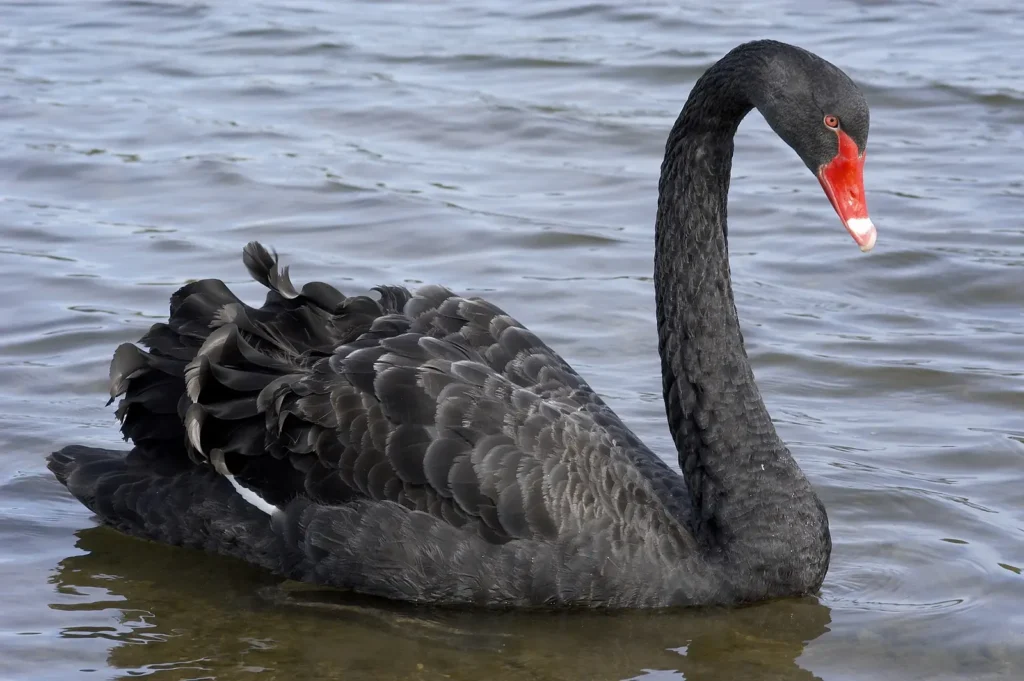
- Details: It is one of the few swan species found in the Southern Hemisphere, and its striking appearance makes it a notable feature of Australian and New Zealand wildlife.
43. Swans are often seen performing “trumpeting” calls during their courtship and territorial displays.
- Details: These loud, resonant calls are used to communicate with mates and rivals. Each swan species has a distinctive call that is recognizable to other swans.
44. Swans are capable of migrating long distances, with some species traveling thousands of miles.
- Details: Migration patterns vary by species, with some swans migrating from breeding grounds in the north to wintering grounds in the south, covering significant distances.
45. The Whooper Swan is known for its large size and impressive wingspan.
- Details: This species is one of the largest swans and is known for its powerful flight and vocalizations. It inhabits northern Europe and Asia during the breeding season.
46. Swans have been observed using tools, such as sticks, to help them forage for food.
- Details: Some swans use natural objects to aid in foraging, demonstrating a level of problem-solving ability and adaptability in their search for food.
47. Swans have a strong sense of territory and will defend their nesting sites aggressively against intruders.
- Details: During the breeding season, swans become particularly territorial, using vocalizations and physical displays to protect their nests from other swans and potential threats.
48. The Bewick’s Swan is the smallest swan species in Europe, known for its delicate size and graceful appearance.
- Details: This species is often found in the northern parts of Europe and is noted for its smaller size compared to other swan species.
49. Swans have been symbols of love and fidelity in various cultures due to their monogamous nature.
- Details: The swan’s lifelong pair bonds have made it a symbol of love and commitment in many cultures, including ancient Greek and Celtic traditions.
50. Swans are capable of complex social behaviors, including cooperative parenting and group foraging.
- Details: Their social structure involves cooperation between mates and family members, which enhances their ability to care for cygnets and find food in their environment.
51. Swans are equipped with a specialized gland near their tail that produces oil to keep their feathers waterproof.
- Details: The preen gland secretes oil that swans use to coat their feathers, maintaining their waterproofing and insulation against cold water.
52. The Trumpeter Swan is named for its trumpeting call, which is one of the loudest among swans.
- Details: This call can carry over long distances and is used for communication during flight and territorial displays.
53. Swans are known for their synchronized swimming during courtship rituals.
- Details: This synchronized movement is part of their elaborate courtship display, which helps reinforce the bond between mates and attracts potential partners.
54. The Black Swan has been introduced to various parts of the world, including Europe and North America, where it has established populations.
- Details: The Black Swan was introduced to non-native regions for ornamental purposes, and it has adapted well to new environments.
55. Swans are often seen in pairs or family groups, which help them maintain strong social bonds and protect their young.
- Details: The close-knit family structure of swans aids in the survival of cygnets and helps maintain social cohesion within their groups.
56. Swans are capable of impressive aerial displays, including flying in formation and performing intricate flight maneuvers.
- Details: Their strong wings and agile flight capabilities enable them to perform coordinated movements during migration and social interactions.
57. The Mute Swan is a common sight in European and North American lakes and rivers, often seen in urban parks and wildlife reserves.
- Details: This species has adapted well to human-altered landscapes, making it a familiar and iconic presence in many public and private water bodies.
58. Swans have a unique feeding behavior where they use their beaks to sift through mud and water for food.
- Details: This behavior allows them to access a variety of food sources, including aquatic plants and small organisms that are not visible on the water’s surface.
59. The Whooper Swan is known for its migratory behavior, traveling long distances between its breeding and wintering grounds.
- Details: This species migrates from northern breeding grounds in Europe and Asia to milder wintering regions, covering thousands of miles in the process.
60. Swans are capable of complex vocalizations, which include trumpeting calls, hissing, and grunting sounds.
- Details: These vocalizations serve various purposes, including communication with mates, signaling alarm, and establishing territory.
61. Swans have been depicted in numerous works of literature and art, symbolizing beauty and elegance.
- Details: Their graceful appearance and behaviors have made them popular subjects in art, literature, and folklore, symbolizing various themes such as purity and transformation.
62. The Black Swan is known for its distinctive appearance and has been a subject of fascination in various cultures.
- Details: Its striking black plumage and contrasting bill have made it a notable species in both natural history and cultural representations.
63. Swans have been observed engaging in cooperative behaviors, such as jointly defending their nests and caring for their young.
- Details: Both parents participate in nesting duties, including protecting their territory and feeding their cygnets, which enhances the survival of their offspring.
64. Swans have been featured in many national symbols and emblems, representing various qualities such as grace and nobility.
- Details: The swan’s elegance and poise have made it a symbol of various national and cultural emblems, including those of the UK and other countries.
65. Swans are capable of forming strong social bonds with other swans, leading to complex group dynamics and interactions.
- Details: Their social structure includes cooperative behaviors and interactions with both family members and non-breeding individuals, contributing to their social complexity.
66. The Trumpeter Swan is known for its impressive size and vocalizations, making it a prominent species in North American wetlands.
- Details: Its large size and distinctive call make the Trumpeter Swan a notable feature of wetlands and other freshwater habitats in North America.
67. Swans are known to migrate in family groups, with young cygnets traveling with their parents to wintering grounds.
- Details: Migration often involves entire family units, with cygnets learning to navigate and survive alongside their parents during seasonal movements.
68. Swans are capable of reaching impressive speeds while flying, making them efficient migrators and agile flyers.

- Details: Their strong wings and aerodynamic bodies enable them to travel long distances quickly and perform complex aerial maneuvers.
69. Swans have a specialized gland that produces oil to help keep their feathers waterproof and buoyant.
- Details: The preen gland secretes oil that swans use to coat their feathers, ensuring they remain dry and well-insulated while swimming and flying.
70. The Bewick’s Swan is known for its small size and delicate appearance, making it one of the more charming swan species.
- Details: Its smaller size and graceful demeanor have endeared it to bird watchers and nature enthusiasts in Europe and Asia.
71. Swans have been featured in various cultural and religious symbols, representing ideals such as purity, love, and transformation.
- Details: Their symbolic significance varies across cultures, often reflecting their beauty and the qualities associated with their behavior and appearance.
72. The Black Swan is known for its striking red bill and legs, which contrast sharply with its dark plumage.
- Details: This coloration adds to its unique appearance and distinguishes it from other swan species.
73. Swans are often seen in pairs or family groups, reflecting their strong social bonds and cooperative behaviors.
- Details: Their social structure includes close family units and cooperative parenting, contributing to the survival and well-being of their young.
74. Swans have been observed using tools and objects to aid in foraging and other activities.
- Details: This behavior demonstrates their problem-solving abilities and adaptability in their natural environments.
75. The Whooper Swan is known for its distinctive whooping call, which can be heard over long distances.
- Details: This call is an important aspect of their communication and is used to establish territory and coordinate with other swans.
76. Swans have been depicted in numerous works of literature, music, and art, symbolizing various themes and qualities.
- Details: Their elegant appearance and behaviors have made them popular subjects in artistic and cultural works, representing ideals such as beauty and grace.
77. The Mute Swan is often found in urban parks and lakes, where it has adapted well to human-altered environments.
- Details: Its adaptability to various habitats has made it a common and recognizable species in both natural and urban settings.
78. Swans are capable of impressive migratory journeys, traveling thousands of miles between breeding and wintering grounds.
- Details: Their migratory patterns vary by species, with some swans covering significant distances to find suitable habitats and food sources.
79. Swans are known for their elaborate courtship displays, which involve synchronized movements and vocalizations.
- Details: These displays help reinforce pair bonds and attract mates, showcasing the swans’ grace and coordination.
80. The Trumpeter Swan is named for its distinctive trumpeting call, which is one of the loudest among swans.
- Details: Its call is a key feature of its behavior, used for communication during migration and territorial disputes.
81. Swans have a unique feeding behavior where they use their beaks to sift through mud and water for food.
- Details: This behavior allows them to access a variety of food sources, including aquatic plants and small organisms that are not visible on the water’s surface.
82. Swans have been featured in various national symbols and emblems, representing qualities such as grace and nobility.
- Details: Their elegance and poise have made them symbols of various nations and cultures, including those with historical and royal significance.
83. Swans are capable of forming strong social bonds with other swans, leading to complex group dynamics and interactions.
- Details: Their social structure includes cooperative behaviors and interactions with both family members and non-breeding individuals, contributing to their social complexity.
84. The Black Swan has been introduced to various parts of the world, including Europe and North America, where it has established populations.
- Details: The Black Swan was introduced to non-native regions for ornamental purposes and has adapted well to new environments.
85. Swans are often seen in pairs or family groups, which help them maintain strong social bonds and protect their young.
- Details: The close-knit family structure of swans aids in the survival of cygnets and helps maintain social cohesion within their groups.
86. Swans are known for their impressive aerial displays, including flying in formation and performing intricate flight maneuvers.
- Details: Their strong wings and agile flight capabilities enable them to perform coordinated movements during migration and social interactions.
87. The Mute Swan is a common sight in European and North American lakes and rivers, often seen in urban parks and wildlife reserves.
- Details: This species has adapted well to human-altered landscapes, making it a familiar and iconic presence in many public and private water bodies.
88. Swans have a unique way of communicating through body language, including head bobbing and wing flapping.
- Details: These physical gestures are important for social interactions and establishing dominance or friendliness within swan groups.
89. The Trumpeter Swan is known for its large size and vocalizations, making it a prominent species in North American wetlands.
- Details: Its large size and distinctive call make the Trumpeter Swan a notable feature of wetlands and other freshwater habitats in North America.
90. Swans are capable of forming long-term pair bonds, often remaining with the same mate for life.
- Details: Their monogamous nature is a key aspect of their social structure, with lifelong partnerships providing stability for raising cygnets.
91. The Bewick’s Swan is known for its small size and delicate appearance, making it one of the more charming swan species.
- Details: Its smaller size and graceful demeanor have endeared it to bird watchers and nature enthusiasts in Europe and Asia.
92. Swans have been observed engaging in cooperative behaviors, such as jointly defending their nests and caring for their young.
- Details: Both parents participate in nesting duties, including protecting their territory and feeding their cygnets, which enhances the survival of their offspring.
93. Swans have been featured in various cultural and religious symbols, representing ideals such as purity, love, and transformation.
- Details: Their symbolic significance varies across cultures, often reflecting their beauty and the qualities associated with their behavior and appearance.
94. The Black Swan is known for its striking red bill and legs, which contrast sharply with its dark plumage.
- Details: This coloration adds to its unique appearance and distinguishes it from other swan species.
95. Swans have a unique feeding behavior where they use their beaks to sift through mud and water for food.
- Details: This behavior allows them to access a variety of food sources, including aquatic plants and small organisms that are not visible on the water’s surface.
96. The Whooper Swan is known for its impressive size and vocalizations, making it a prominent species in northern Europe and Asia.
- Details: Its large size and distinctive whooping call make it a notable feature of its breeding and wintering habitats.
97. Swans have been depicted in numerous works of literature, music, and art, symbolizing various themes and qualities.
- Details: Their elegant appearance and behaviors have made them popular subjects in artistic and cultural works, representing ideals such as beauty and grace.
98. The Mute Swan is often found in urban parks and lakes, where it has adapted well to human-altered environments.
- Details: Its adaptability to various habitats has made it a common and recognizable species in both natural and urban settings.
99. Swans are capable of reaching impressive speeds while flying, making them efficient migrators and agile flyers.
- Details: Their strong wings and aerodynamic bodies enable them to travel long distances quickly and perform complex aerial maneuvers.
100. Swans have a specialized gland that produces oil to help keep their feathers waterproof and buoyant.
- Details: The preen gland secretes oil that swans use to coat their feathers, ensuring they remain dry and well-insulated while swimming and flying.
